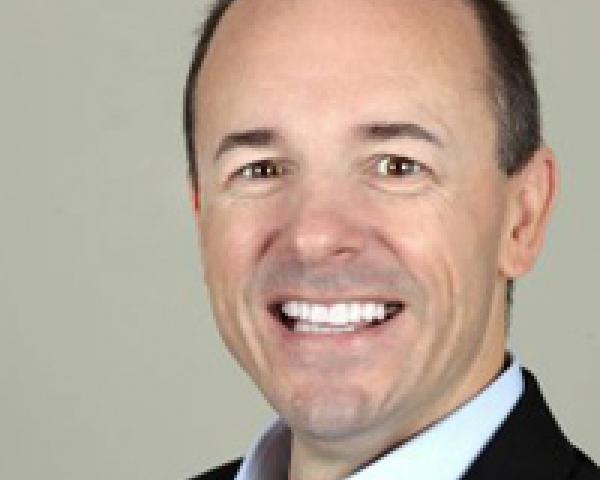 In a recent study of 7,600 businesses by Payscale, 73% of employers believe they pay fairly, while only 36% of employees feel the same. And just 21% of the workers believe the company is transparent about pay.
Catching my drift, employers? You can kill three birds with one stone: gaining healthier employees, potentially lowering healthcare costs and improving engagement through greater levels of trust and feeling appreciated financially.
Reward healthcare consumers by tying wellness goals to financial rewards or punishments. (We are talking cash here, folks — not trips, massages or points). Health plans? Same thing. If you want to balance out the risk of sicker members, per enrollment with the ACA mandates, hit up your chronic, pre-chronic and younger members. See how financial incentives and disincentives work there.
If they use wearables and contribute data to you or their provider, they are rewarded financially. If they hit goals on medication adherence, weight loss, lowering cholesterol or blood sugar, give them a paid check rebate. If they have a yearly physical, reward them.
Better yet, show them that future check with all applicable bonuses added together for their rewards. It is a nice, juicy number. Now, deduct 2% of that cash every week they don't execute — like a melting ice cube. Keep showing them as often as possible what they are going to be missing. Catching my drift?
QUANTITY: Care delivery professionals, facilities and systems will soon have outcomes, patient satisfaction and cost numbers pitted against their service reimbursement levels — and, eventually, against each other. Consumerism is growing and, whether healthcare stays largely regulated in its pricing or not, reimbursement levels at all aspects of the care supply and delivery chain (including on many prescription drugs) will likely decrease.
Moreover, reimbursement via bundled, value-based payments will come to replace the old, perverse, fee-for-service model. Hence, lower payments for the same work means the number of people engaging in healthcare products and services must grow if revenues are to grow.
Healthcare businesses will have to optimize every possible aspect of their business for new and repeat customer engagement and to retain their customer base. Especially important here will be those successful companies who focus on their intangible assets. These include advertising, marketing, sales, goodwill, customer relationships and various expertise that hospitals, providers, payers, drug companies and facilities have, which they can, and should, capitalize upon to their economic advantage.
The companies that get this will shape their precise outcomes through mastering the art of optimization. Learning how to maximize their intangible assets to drive more engagement of current and prospective consumer clients, thus increasing quantity of services and products. They will look at every consumer and business relationship, every past and present contact, every opportunity in current consumer interactions, every supply and distribution channel, every employee and every piece of capital or human capital they have.
See also: Is Transparency the Answer in Healthcare?
Many healthcare companies suffer from tunnel — instead of “funnel” — vision. They believe they provide products or care and are paid for such — and that's it. But the organizations that recognize they can not only offer more but be more than their basic business offerings will derive greater revenue and profit.
Population health is a great example. It is about more than capturing data from wearables; it is about recognizing the interplay between chronic disease and genetics and the need for screening those who don't currently engage in healthcare services. It is about tying in mental health for those who are caregivers and don't take care of themselves. It is about recognizing that, if you work out a medical debt with more than a negotiation but perhaps a thank you card sent after, your name will be more gold than mud.
For direct primary care doctors, it is about offering a rebate to customers who bring new members to your practice. For a health system, it might be coordinating a telehealth counseling visit to a family member grieving because of a loved one's illness. What about making that extra call to check up on how a patient is doing at home the day after they get home from the hospital?
Perhaps it's giving a free service. Often, the most self-serving thing a company can do is actually to be selfless. Maybe it is a doctor's office sending flowers after a successful surgery outcome or even upon a loved one dying. Maybe it is a call from a drug company outbound customer coordinator, just to see how the new medication is working.
Health companies of all types and sizes that replace current limiting beliefs with empowering ones will find themselves on a track toward capturing greater community value, engagement and increasing their market identity. In short, companies that get people to want to engage and help others engage with those same companies will thrive.
Players in healthcare must not forget that consumerism is not a dirty word; it is people putting up their hands saying, “I want to be cared for and find value in that care so that I can feel good about my time and money spent.”
If they have to be cared for because of sickness or an emergency, then that is all the more reason to make patients feel good about you.
It is no longer a healthcare world where providing the service, billing and receiving payment suffices. People and employers are smartening up and recognizing that lower reimbursement, more competition and new options for care and coverage are developing.
Those healthcare companies that can integrate the intangibles in a meaningful, ethical and value-added manner for their current and prospective healthcare consumers will thrive. Increasing quantity of consumers and identifying and rendering necessary services is key (especially in a healthcare business environment that has properly integrated lower costs, greater efficiency through technology and better outcomes).
It will make — and keep — current and future healthcare consumers far happier in the long run. Now that's some of the best risk management I know about.
In a recent study of 7,600 businesses by Payscale, 73% of employers believe they pay fairly, while only 36% of employees feel the same. And just 21% of the workers believe the company is transparent about pay.
Catching my drift, employers? You can kill three birds with one stone: gaining healthier employees, potentially lowering healthcare costs and improving engagement through greater levels of trust and feeling appreciated financially.
Reward healthcare consumers by tying wellness goals to financial rewards or punishments. (We are talking cash here, folks — not trips, massages or points). Health plans? Same thing. If you want to balance out the risk of sicker members, per enrollment with the ACA mandates, hit up your chronic, pre-chronic and younger members. See how financial incentives and disincentives work there.
If they use wearables and contribute data to you or their provider, they are rewarded financially. If they hit goals on medication adherence, weight loss, lowering cholesterol or blood sugar, give them a paid check rebate. If they have a yearly physical, reward them.
Better yet, show them that future check with all applicable bonuses added together for their rewards. It is a nice, juicy number. Now, deduct 2% of that cash every week they don't execute — like a melting ice cube. Keep showing them as often as possible what they are going to be missing. Catching my drift?
QUANTITY: Care delivery professionals, facilities and systems will soon have outcomes, patient satisfaction and cost numbers pitted against their service reimbursement levels — and, eventually, against each other. Consumerism is growing and, whether healthcare stays largely regulated in its pricing or not, reimbursement levels at all aspects of the care supply and delivery chain (including on many prescription drugs) will likely decrease.
Moreover, reimbursement via bundled, value-based payments will come to replace the old, perverse, fee-for-service model. Hence, lower payments for the same work means the number of people engaging in healthcare products and services must grow if revenues are to grow.
Healthcare businesses will have to optimize every possible aspect of their business for new and repeat customer engagement and to retain their customer base. Especially important here will be those successful companies who focus on their intangible assets. These include advertising, marketing, sales, goodwill, customer relationships and various expertise that hospitals, providers, payers, drug companies and facilities have, which they can, and should, capitalize upon to their economic advantage.
The companies that get this will shape their precise outcomes through mastering the art of optimization. Learning how to maximize their intangible assets to drive more engagement of current and prospective consumer clients, thus increasing quantity of services and products. They will look at every consumer and business relationship, every past and present contact, every opportunity in current consumer interactions, every supply and distribution channel, every employee and every piece of capital or human capital they have.
See also: Is Transparency the Answer in Healthcare?
Many healthcare companies suffer from tunnel — instead of “funnel” — vision. They believe they provide products or care and are paid for such — and that's it. But the organizations that recognize they can not only offer more but be more than their basic business offerings will derive greater revenue and profit.
Population health is a great example. It is about more than capturing data from wearables; it is about recognizing the interplay between chronic disease and genetics and the need for screening those who don't currently engage in healthcare services. It is about tying in mental health for those who are caregivers and don't take care of themselves. It is about recognizing that, if you work out a medical debt with more than a negotiation but perhaps a thank you card sent after, your name will be more gold than mud.
For direct primary care doctors, it is about offering a rebate to customers who bring new members to your practice. For a health system, it might be coordinating a telehealth counseling visit to a family member grieving because of a loved one's illness. What about making that extra call to check up on how a patient is doing at home the day after they get home from the hospital?
Perhaps it's giving a free service. Often, the most self-serving thing a company can do is actually to be selfless. Maybe it is a doctor's office sending flowers after a successful surgery outcome or even upon a loved one dying. Maybe it is a call from a drug company outbound customer coordinator, just to see how the new medication is working.
Health companies of all types and sizes that replace current limiting beliefs with empowering ones will find themselves on a track toward capturing greater community value, engagement and increasing their market identity. In short, companies that get people to want to engage and help others engage with those same companies will thrive.
Players in healthcare must not forget that consumerism is not a dirty word; it is people putting up their hands saying, “I want to be cared for and find value in that care so that I can feel good about my time and money spent.”
If they have to be cared for because of sickness or an emergency, then that is all the more reason to make patients feel good about you.
It is no longer a healthcare world where providing the service, billing and receiving payment suffices. People and employers are smartening up and recognizing that lower reimbursement, more competition and new options for care and coverage are developing.
Those healthcare companies that can integrate the intangibles in a meaningful, ethical and value-added manner for their current and prospective healthcare consumers will thrive. Increasing quantity of consumers and identifying and rendering necessary services is key (especially in a healthcare business environment that has properly integrated lower costs, greater efficiency through technology and better outcomes).
It will make — and keep — current and future healthcare consumers far happier in the long run. Now that's some of the best risk management I know about.Not Your Mama's Recipe for Healthcare
How do we disassemble a massively interconnected, for-profit health model that isn't working? There is a way.

 In a recent study of 7,600 businesses by Payscale, 73% of employers believe they pay fairly, while only 36% of employees feel the same. And just 21% of the workers believe the company is transparent about pay.
Catching my drift, employers? You can kill three birds with one stone: gaining healthier employees, potentially lowering healthcare costs and improving engagement through greater levels of trust and feeling appreciated financially.
Reward healthcare consumers by tying wellness goals to financial rewards or punishments. (We are talking cash here, folks — not trips, massages or points). Health plans? Same thing. If you want to balance out the risk of sicker members, per enrollment with the ACA mandates, hit up your chronic, pre-chronic and younger members. See how financial incentives and disincentives work there.
If they use wearables and contribute data to you or their provider, they are rewarded financially. If they hit goals on medication adherence, weight loss, lowering cholesterol or blood sugar, give them a paid check rebate. If they have a yearly physical, reward them.
Better yet, show them that future check with all applicable bonuses added together for their rewards. It is a nice, juicy number. Now, deduct 2% of that cash every week they don't execute — like a melting ice cube. Keep showing them as often as possible what they are going to be missing. Catching my drift?
QUANTITY: Care delivery professionals, facilities and systems will soon have outcomes, patient satisfaction and cost numbers pitted against their service reimbursement levels — and, eventually, against each other. Consumerism is growing and, whether healthcare stays largely regulated in its pricing or not, reimbursement levels at all aspects of the care supply and delivery chain (including on many prescription drugs) will likely decrease.
Moreover, reimbursement via bundled, value-based payments will come to replace the old, perverse, fee-for-service model. Hence, lower payments for the same work means the number of people engaging in healthcare products and services must grow if revenues are to grow.
Healthcare businesses will have to optimize every possible aspect of their business for new and repeat customer engagement and to retain their customer base. Especially important here will be those successful companies who focus on their intangible assets. These include advertising, marketing, sales, goodwill, customer relationships and various expertise that hospitals, providers, payers, drug companies and facilities have, which they can, and should, capitalize upon to their economic advantage.
The companies that get this will shape their precise outcomes through mastering the art of optimization. Learning how to maximize their intangible assets to drive more engagement of current and prospective consumer clients, thus increasing quantity of services and products. They will look at every consumer and business relationship, every past and present contact, every opportunity in current consumer interactions, every supply and distribution channel, every employee and every piece of capital or human capital they have.
See also: Is Transparency the Answer in Healthcare?
Many healthcare companies suffer from tunnel — instead of “funnel” — vision. They believe they provide products or care and are paid for such — and that's it. But the organizations that recognize they can not only offer more but be more than their basic business offerings will derive greater revenue and profit.
Population health is a great example. It is about more than capturing data from wearables; it is about recognizing the interplay between chronic disease and genetics and the need for screening those who don't currently engage in healthcare services. It is about tying in mental health for those who are caregivers and don't take care of themselves. It is about recognizing that, if you work out a medical debt with more than a negotiation but perhaps a thank you card sent after, your name will be more gold than mud.
For direct primary care doctors, it is about offering a rebate to customers who bring new members to your practice. For a health system, it might be coordinating a telehealth counseling visit to a family member grieving because of a loved one's illness. What about making that extra call to check up on how a patient is doing at home the day after they get home from the hospital?
Perhaps it's giving a free service. Often, the most self-serving thing a company can do is actually to be selfless. Maybe it is a doctor's office sending flowers after a successful surgery outcome or even upon a loved one dying. Maybe it is a call from a drug company outbound customer coordinator, just to see how the new medication is working.
Health companies of all types and sizes that replace current limiting beliefs with empowering ones will find themselves on a track toward capturing greater community value, engagement and increasing their market identity. In short, companies that get people to want to engage and help others engage with those same companies will thrive.
Players in healthcare must not forget that consumerism is not a dirty word; it is people putting up their hands saying, “I want to be cared for and find value in that care so that I can feel good about my time and money spent.”
If they have to be cared for because of sickness or an emergency, then that is all the more reason to make patients feel good about you.
It is no longer a healthcare world where providing the service, billing and receiving payment suffices. People and employers are smartening up and recognizing that lower reimbursement, more competition and new options for care and coverage are developing.
Those healthcare companies that can integrate the intangibles in a meaningful, ethical and value-added manner for their current and prospective healthcare consumers will thrive. Increasing quantity of consumers and identifying and rendering necessary services is key (especially in a healthcare business environment that has properly integrated lower costs, greater efficiency through technology and better outcomes).
It will make — and keep — current and future healthcare consumers far happier in the long run. Now that's some of the best risk management I know about.
In a recent study of 7,600 businesses by Payscale, 73% of employers believe they pay fairly, while only 36% of employees feel the same. And just 21% of the workers believe the company is transparent about pay.
Catching my drift, employers? You can kill three birds with one stone: gaining healthier employees, potentially lowering healthcare costs and improving engagement through greater levels of trust and feeling appreciated financially.
Reward healthcare consumers by tying wellness goals to financial rewards or punishments. (We are talking cash here, folks — not trips, massages or points). Health plans? Same thing. If you want to balance out the risk of sicker members, per enrollment with the ACA mandates, hit up your chronic, pre-chronic and younger members. See how financial incentives and disincentives work there.
If they use wearables and contribute data to you or their provider, they are rewarded financially. If they hit goals on medication adherence, weight loss, lowering cholesterol or blood sugar, give them a paid check rebate. If they have a yearly physical, reward them.
Better yet, show them that future check with all applicable bonuses added together for their rewards. It is a nice, juicy number. Now, deduct 2% of that cash every week they don't execute — like a melting ice cube. Keep showing them as often as possible what they are going to be missing. Catching my drift?
QUANTITY: Care delivery professionals, facilities and systems will soon have outcomes, patient satisfaction and cost numbers pitted against their service reimbursement levels — and, eventually, against each other. Consumerism is growing and, whether healthcare stays largely regulated in its pricing or not, reimbursement levels at all aspects of the care supply and delivery chain (including on many prescription drugs) will likely decrease.
Moreover, reimbursement via bundled, value-based payments will come to replace the old, perverse, fee-for-service model. Hence, lower payments for the same work means the number of people engaging in healthcare products and services must grow if revenues are to grow.
Healthcare businesses will have to optimize every possible aspect of their business for new and repeat customer engagement and to retain their customer base. Especially important here will be those successful companies who focus on their intangible assets. These include advertising, marketing, sales, goodwill, customer relationships and various expertise that hospitals, providers, payers, drug companies and facilities have, which they can, and should, capitalize upon to their economic advantage.
The companies that get this will shape their precise outcomes through mastering the art of optimization. Learning how to maximize their intangible assets to drive more engagement of current and prospective consumer clients, thus increasing quantity of services and products. They will look at every consumer and business relationship, every past and present contact, every opportunity in current consumer interactions, every supply and distribution channel, every employee and every piece of capital or human capital they have.
See also: Is Transparency the Answer in Healthcare?
Many healthcare companies suffer from tunnel — instead of “funnel” — vision. They believe they provide products or care and are paid for such — and that's it. But the organizations that recognize they can not only offer more but be more than their basic business offerings will derive greater revenue and profit.
Population health is a great example. It is about more than capturing data from wearables; it is about recognizing the interplay between chronic disease and genetics and the need for screening those who don't currently engage in healthcare services. It is about tying in mental health for those who are caregivers and don't take care of themselves. It is about recognizing that, if you work out a medical debt with more than a negotiation but perhaps a thank you card sent after, your name will be more gold than mud.
For direct primary care doctors, it is about offering a rebate to customers who bring new members to your practice. For a health system, it might be coordinating a telehealth counseling visit to a family member grieving because of a loved one's illness. What about making that extra call to check up on how a patient is doing at home the day after they get home from the hospital?
Perhaps it's giving a free service. Often, the most self-serving thing a company can do is actually to be selfless. Maybe it is a doctor's office sending flowers after a successful surgery outcome or even upon a loved one dying. Maybe it is a call from a drug company outbound customer coordinator, just to see how the new medication is working.
Health companies of all types and sizes that replace current limiting beliefs with empowering ones will find themselves on a track toward capturing greater community value, engagement and increasing their market identity. In short, companies that get people to want to engage and help others engage with those same companies will thrive.
Players in healthcare must not forget that consumerism is not a dirty word; it is people putting up their hands saying, “I want to be cared for and find value in that care so that I can feel good about my time and money spent.”
If they have to be cared for because of sickness or an emergency, then that is all the more reason to make patients feel good about you.
It is no longer a healthcare world where providing the service, billing and receiving payment suffices. People and employers are smartening up and recognizing that lower reimbursement, more competition and new options for care and coverage are developing.
Those healthcare companies that can integrate the intangibles in a meaningful, ethical and value-added manner for their current and prospective healthcare consumers will thrive. Increasing quantity of consumers and identifying and rendering necessary services is key (especially in a healthcare business environment that has properly integrated lower costs, greater efficiency through technology and better outcomes).
It will make — and keep — current and future healthcare consumers far happier in the long run. Now that's some of the best risk management I know about.






